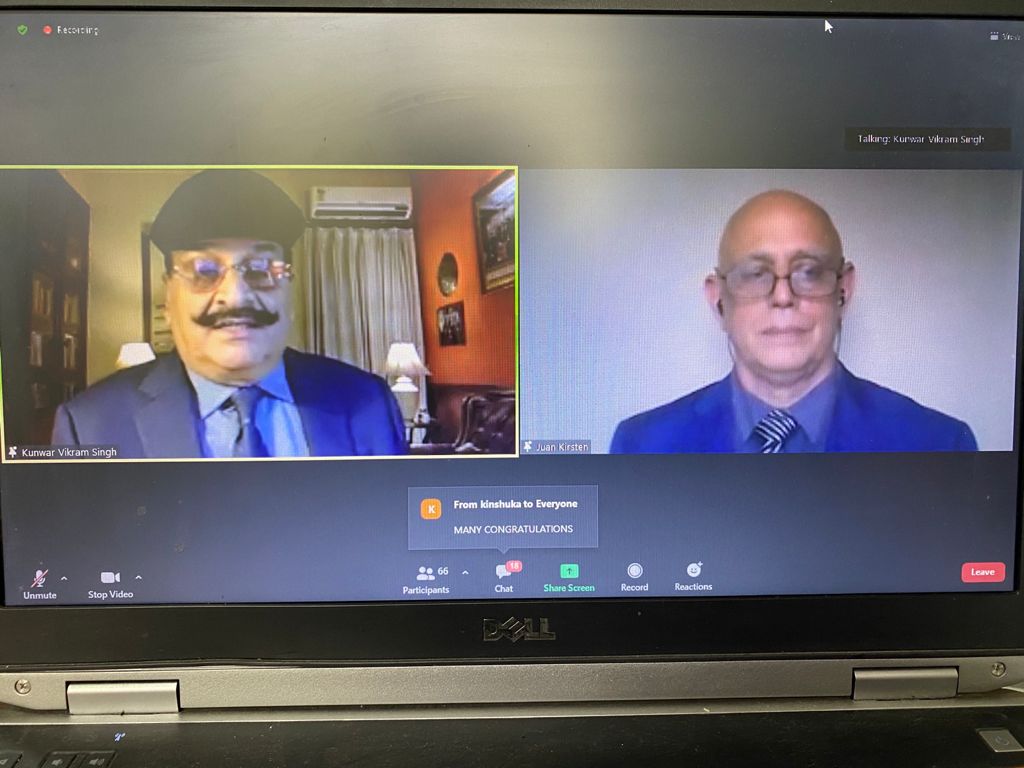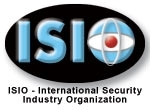
+7 Million Security Practitioners are unleased by CAPSI (India), and ISIO (Global) on a mission.
Click Video Clip to view

Mission
Integrate the Security Industry into the Covid-19 mitigation process by contributing methodologies for Biological Threat Security and Standards for Compliance
On the 30th of April, The Chairman of CAPSI, Mr Kunwar Vikram Singh and Director General of ISIO Juan Kirsten addressed the topic of Biological Threat Security.
The private security industry is larger than many policing or military unit in most countries. The security industry personnel along with technology and equipment screen people before entering sites. The security industry actually manages and facilitates the health protocols on the ground.
The security industry comprehends the fact that the current situation is,
1. We do not know how long the vaccine will be effective before it expires within our bodies.
2. We do know that this virus is mutating which could become more deadly
3. We also know that the entire globe must be inoculated before herd immunity comes into session.
Until now the health community has contributed three protocols for limiting the collateral damage of the active mutating biological threat, namely, infection testing (chemical and temperature), besides hygiene and social behavior. It is the security industry that rolls out the protocols but has to do more because of certain issues and the crime related to the threat.
It is impossible to chemical test everybody every and many times a day. The Security industry does electronically test every day and many times a day for the temperatures of people because the population pass through a security access point be it at a building or any other shelter under a roof.
Regarding the social interaction: the security practitioners manage the entry control to sites and therefore manages social interactions. They differ from other front-liners because they could easily manage aggressive and violent behavior. We do know that people shout and could spit into the eyes of a person out of contempt. The eyes being just as porous as the mouth could easily be an entry source of a viral transmission. This means that security practitioners handle life impacting or deadly outcomes daily.
Tailing related issues threats
There is crime related to the threat for example, the theft of oxygen bottles and other basic needs of man that causes pandemonium that adds to the crisis.
Also, the outcome of the threat is the economic meltdown. When customers avoid going to a site or are unable to afford certain goods then the illegal economy grows at a phenomenal rate because transnational, locally organized and gang crime are feeding off the desperate.
All the above dictates that the security sector is a vital stakeholder and contributor towards reducing the number of people or business fatalities and will provide a secure pathway for economic recovery.
Methodologies and Standards
Security success for the Active Mutating Biological Threat
Security success depends on the level of situational awareness of the people on the ground (all are decision-makers) and their reaction speed (Juan Kirsten 2018). When it comes to handling an active biological threat – reaction speed is vital.
Each site is different with distinct demands. There are therefore different protocols for distinct fields of interest, for example, there would be unique protocols for a rehabilitation center to a mall to a stadium. This is not a one size fits all kind-of-thing.
This sets the respected standard that is required for such a threat because there is technology and equipment that is regarded as illegal in some countries besides being incorrectly installed and used haphazardly
Furthermore, the front-liners must be layered by skillsets to reduce the number of aggressive incidents that could lead to mass infections of the security practitioners besides the population in general. Also, the officers that may have a high probability of infection by interacting with aggressive situations and therefore must be using medical grade masks and their eyes must be protected by face shields or goggles.
Protocols based on sound security principles
These CV-19 security protocols are based on intensive research which fueled the security and operational protocol guide for managing COVID-19 in March 2020. These have been reviewed by Professor Larry Barton and Dr Rommel Manwong (Prof). This was followed by the release of booklets for COVID-19 building security protocols and housing protocols produced by Jean-Pierre Roux (MPhil) prior to starting his Doctoral (joint-PhD) research at the universities of Glasgow and Edinburgh.
Using AI
AI for Security Criminology-Risk Investigation must also address cv-19 protocol considerations when merging technology, equipment and manpower. From the incident reporting the managers can assess the flare up points and address the issues with layered and appropriate skillsets. This all must be considered because the security industry just like all others are shifting and adapting to the 4th industrial revolution.
Stakeholders
This initiative is important because it is impossible to inoculate the entire globe within weeks. In some countries it could take still a good year to begin making impact. The point is – is that this is a mutating beast that can change shape. The security industry must have awareness of comprehending that this is an active biological threat that must be treated with the respect and addressed accordingly by using security covid-19 protocols.
Therefore, we are inviting all stakeholders to participate as territorial boundaries are not respected by the virus.
All must work together toward limiting the levels of collateral damage.
We must acknowledge those that have suffered in anyway due to the health or business impacted by these multiple threats and do thank all practitioners, technology and equipment providers along with the educators for their service.
To comprehend the brief view the recorded link
To view free booklet for security officers as well as 12 short video clips visit this link
CAPSI www.capsi.in ISIO www.intsi.org
